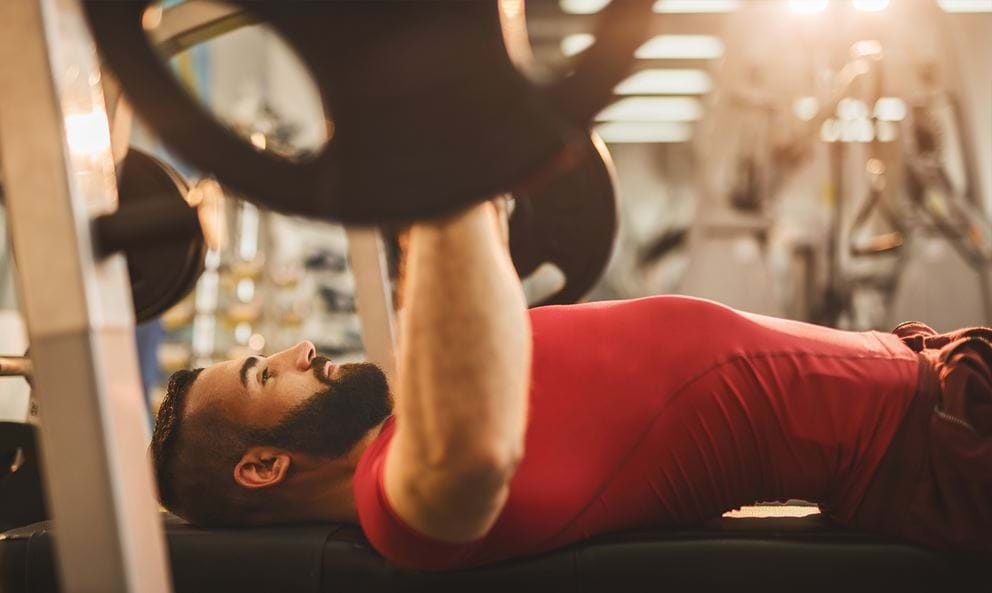A Beginners Guide to Bulking and Cutting

Ever since the glory days of bodybuilding, when figures like Arnold Schwarzenegger, Franco Columbu, Lou Ferrigno, and Frank Zane dominated the muscle scene, “bulking” and “cutting” cycles have been a routine for many in the pursuit of an aesthetically pleasing physique.
Put simply, a bulking cycle is a time when you’re eating a surplus of food and lifting heavy weights to build muscle mass.
Since fat gain almost inevitably comes alongside muscle gain, the other part of the equation is the “cutting” cycle, where you eat at a caloric deficit and modify your workout routine to burn the maximum amount of fat while holding onto as much of your hard-earned muscle and strength as possible.
If you’re new to these well-worn bodybuilding concepts, here are some tips for how to bulk and cut successfully.
Skip to how to cut for beginners
Bulking for beginners

Eat at a caloric surplus
The first thing to keep in mind when bulking is that you should be eating a caloric surplus to promote significant muscle growth.
Generally, when you eat at a caloric surplus, your body will be in an “anabolic” state. This means that it’s in a growth phase where new tissue will be constructed, including muscle and bone among other things.
Your caloric surplus should be controlled. You should eat slightly above your “maintenance” calorie needs, but shouldn’t overdo it. If your strength and weight are slowly rising, with minimal fat gain, that’s a good sign.
Tools like MyFitnessPal can help you to estimate your ideal daily calorie intake.
Eat moderate protein and fat, and a substantial amount of carbs
Low-carb diets are popular for various reasons, but they’re not a great strategy for bulking up. When you’re bulking, your body needs the glycogen produced by carb-consumption to power heavy lifts.
The insulin spikes associated with high carb intake also play some role in promoting muscle growth, which is why elite level bodybuilders often inject insulin directly.
Although protein is usually thought of as the number one macronutrient required to build muscle, evidence shows that your bulking protein requirements are lower than you might think.
Research has found evidence that around 1.3-1.8g of protein per kg of bodyweight is the highest threshold where protein intake seems to improve body composition during a bulk.
In other words, an 80kg person would need to eat between 104g - 144g of protein during their bulk to keep gaining muscle, far less than is usually recommended.
Fat intake should be kept moderate for proper hormonal balance.
Lift heavy and focus on a moderate rep-range
As the point of bulking is to pack on muscle, it’s important to lift heavy in a moderate rep range of about 8-12 reps per set.
Base your workouts around compound lifts like the squat and bench press, and add in assistance exercises to focus on particular muscle groups.
Emphasise steady progress in your lifting.
Avoid “dirty bulking” to avoid excess fat gain
“Dirty bulking” refers to eating junk food to bulk up. Not only is this bad for your health, but it also promotes greater fat gain, which makes your cutting phase harder. Try to avoid this common pitfall.
Cutting for beginners

Eat at a caloric deficit
Just as the aim of bulking is to be in a caloric surplus, the aim of cutting is to be in a caloric deficit. This puts you in a “catabolic” state — one where tissue is broken down in the body.
Keep your calorie intake below maintenance, but don’t go too low.
Reduce insulin to increase fat burning
Low-carb dieting and techniques like carb-backloading and intermittent fasting are largely thought to work because they reduce insulin levels in the body and improve insulin sensitivity.
Experiment with these techniques to see how they work for you.
Focus on exercises that get your heart rate up and burn significant calories
When cutting, burning excess calories during your workouts is something to aim for. Modify your training routine to make it more dynamic and keep your heart-rate up. Reducing rest times and using super-sets can be a good idea.
Keep protein intake up
Protein is more important on a cut than a bulk because it helps to spare muscle during tissue wasting. You may not need to boost your protein intake dramatically during a cut, but keeping it a bit on the higher side can be a good idea.
Continue to strength train, but don’t expect significant gains
Resistance exercise is known to help maintain muscle mass during a calorie deficit, so continuing your strength-training regimen during a cut is essential.
Strive to progress your lifts wherever possible, but don’t expect significant gains.
If you’re thinking about introducing bulking and cutting into your regime, make sure you understand the benefits and the risks first. Take it easy and as always, listen to your body.


